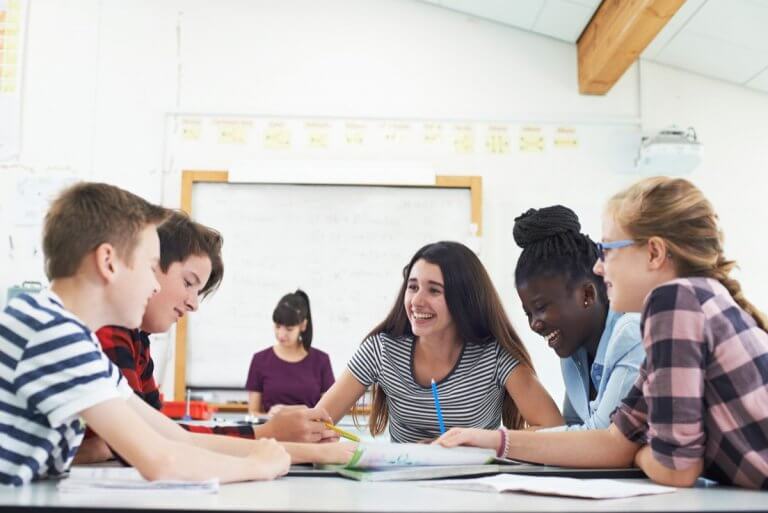
Problem-based learning (PBL) is a method of learning or teaching that encourages students to apply their critical thinking and problem-solving skills to address real-world problems. It’s a rich and engaging learning experience.
This pedagogy differs from the traditional lecture-based approach, where teachers primarily provide students with information, also acting as facilitators who guide pupils through the learning process.
PBL was originally developed for medical students to improve their clinical reasoning and problem-solving skills, but has since transcended those borders to be used in other university disciplines and even K12 students.
However, while many pedagogies rise in popularity before dying down, is PBL just another fad that will come and go?
Should PBL be used in the classroom?

Studies suggest that PBL can offer some advantages to students. Source: Shutterstock
Reports suggest that skills such as critical thinking and creativity are among those needed for individuals to thrive in the modern workplace when technological advances accelerate.
Studies and literature reviews suggest that PBL can offer some advantages to students.
A study that published in The Interdisciplinary Journal of Problem-based Learning (IJPBL) noted that: “PBL has the potential to improve students’ higher-order thinking skills, comprehension and application of knowledge, learning attitudes and motivation” and may also encourage students to accept more responsibility for their learning.
The study, titled Why Teach With PBL? Motivational Factors Underlying Middle and High School Teachers’ Use of Problem-Based Learning, was published last year.
Meanwhile, according to literature reviews, PBL may increase long-term knowledge retention, while the Center for Innovation in Research and Teaching notes that some of the advantages of PBL include:
- It can encourage higher order critical thinking and de-emphasise memorisation
- It can help student learn what is relevant to the real world
- It can increase motivation to learn and arrive at a solution
- It can provide opportunities for students to collaborate and practice their communication and social skills
- It can help students understand how to learn
education world suggests that teachers can implement PBL by getting students to work on problems affecting the neighbourhood or school community, such as an ongoing litter problem, or by asking students to identify problems in the area, depending on their age and experience with problem-based learning.
“Once you have selected a problem, gather your students to discuss project goals, deadlines and materials, and to brainstorm some action steps for the project. Make sure your assignment has no one right answer. Let your students drive the discussion and do the real, ‘messy’ work—your job is to offer gentle direction and answer questions,” they note.
The final outcome of the project could come in various formats, such as “a persuasive letter or series of graphs to a multimedia presentation”.
Potential challenges
Despite the potential benefits PBL can bring to the classroom, studies suggest that incorporating PBL can pose some teaching challenges.
The IJPBL study noted: “In order to reach the full potential of PBL, the curriculum needs to be designed to meet the specific instructional needs and constraints of the students, such as their ability to be self-directed in their learning.”
The authors added that both teachers and students “who are new to the responsibilities of this open-ended learning environment” will need time to adjust to their changing roles, adding that studies suggest designing effective PBL problems is “time-consuming and research-intensive process”.
This adds to teachers’ stress levels, and potentially reduces their desire to implement PBL in the classroom. To boot, students who do not fare well in self-directed learning may pose another challenge.







